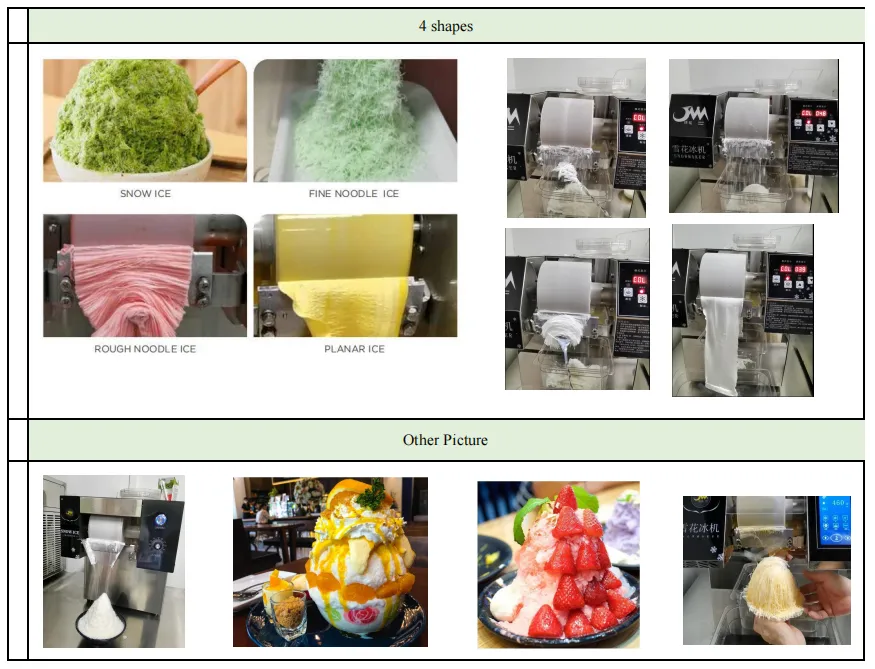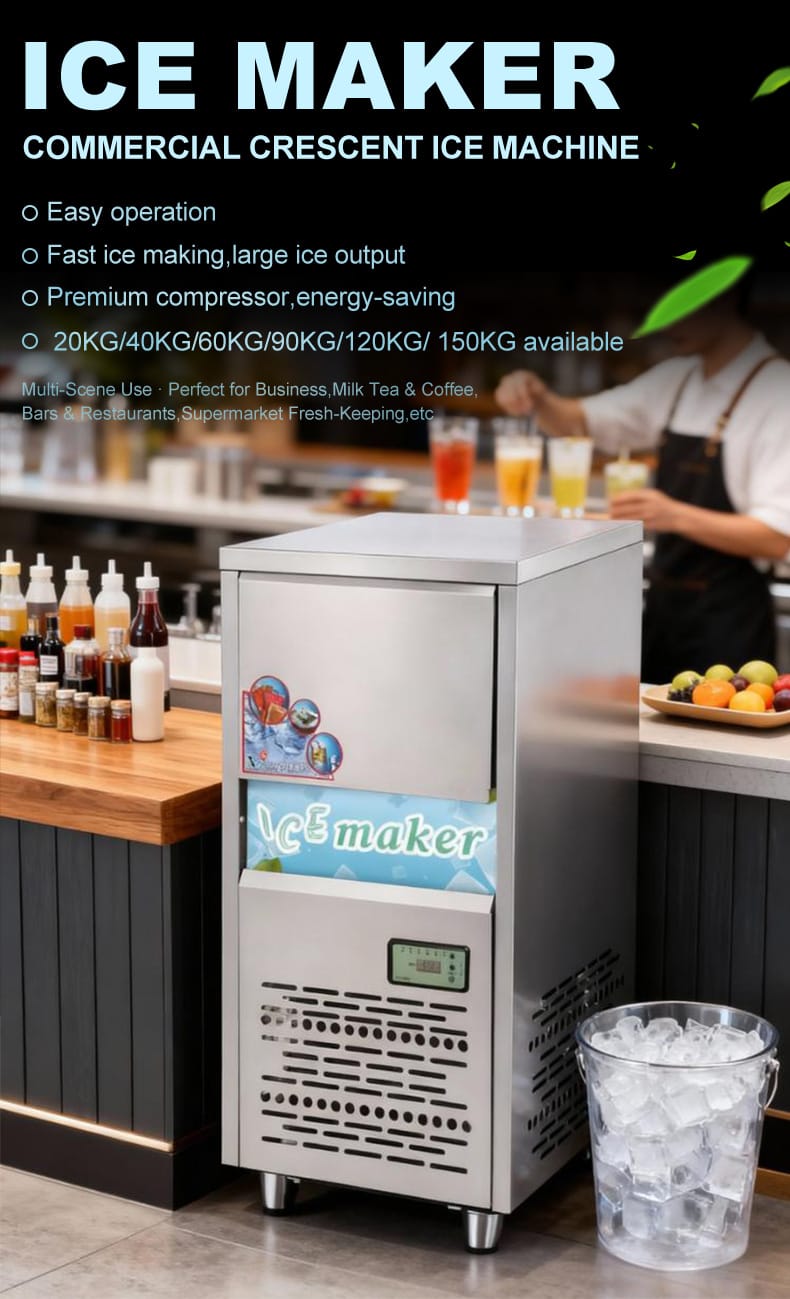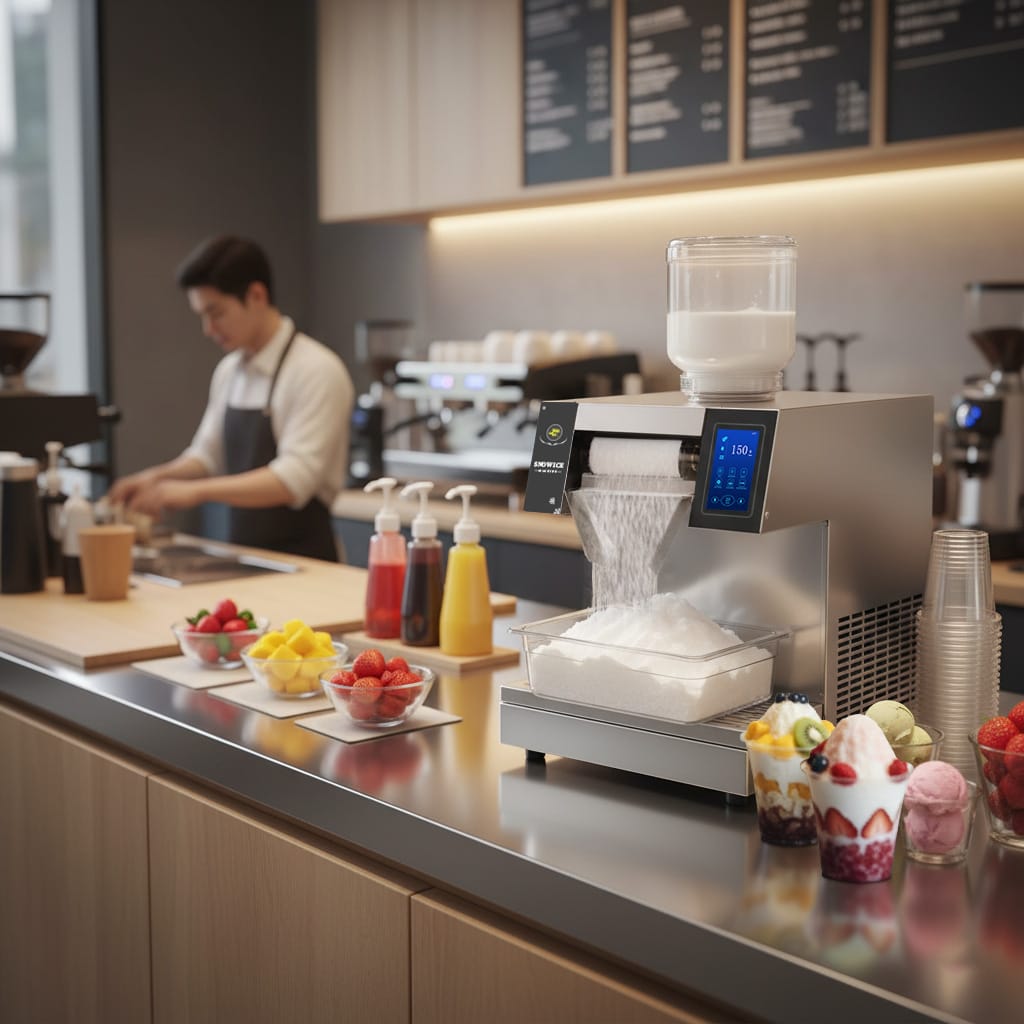Commercial Bingsu machines is used to create the traditional Korean dessert known as Bingsu (also called bingsoo or Korean ice cream). The machine turns liquid ingredient into soft, fluffy snow-like ice, which is then topped with condensed milk, syrups, fruits, or candies. In recent years, Bingsu has become a global trend, and the machine is now commonly seen in dessert shops, food trucks, and restaurants.
This article covers how to operate a Bingsu machine, tips for choosing the right model, and a classic recipe to help you easily create beautiful and delicious Bingsu.
1. The Difference Between Bingsu, Shaved Ice, and Ice Cream
Shaved Ice: Usually made by shaved hard ice into flakes, resulting in a coarse texture. It’s typically served with syrup, red beans, and other toppings.
(For more on shaved ice, refer to the article: How to Make Fine Shaved Ice.)
Ice Cream: Made from milk, cream, sugar, and fruit. It has a smooth, creamy texture and requires an ice cream machine or manual churning.
Bingsu: The machine uses a chilled drum that rotates to coat itself with the beverage. A mechanical blade scrapes the frozen layer into ultra-fine snow-like flakes, which fall into a bowl and are then topped with various ingredients. The process is not only visually appealing but also captures customer attention.

2. Why Are Commercial Bingsu Machines So Popular?
- Ease of Use: Requires almost no technical skills. Anyone can operate it with minimal training.
- Menu Expansion: Restaurants can quickly diversify their dessert offerings without extra labor or training costs.
- Brand Differentiation: Food trucks and dessert shops can develop unique Bingsu styles to stand out and increase competitiveness.

3. How to Operate a Bingsu Machine
The machine is simple to use and allows for lots of creative possibilities. You can make snow ice with milk, juice, coffee, cola, beer, or any other edible liquid base you prepare.
A. Adjusting Drum Speed
- High Speed: Produces thin, transparent snow ice, which absorbs flavors more easily.
- Low Speed: Creates thicker, granular ice flakes that are better suited for ice fruit bowls or traditional shaved ice.
B. Liquid Consistency
- Thicker Liquids: High in sugar or gelatin; results in ribbon-like flakes with a soft texture.
- Thinner Liquids: Easier to form fine, snowflake-like ice.
Operation Steps:
Step 1: Preparation
Connect water inlet and outlet pipes (for water-cooled models). Pour in the beverage base. Make sure blades are clean and sharp. Prepare toppings like condensed milk, syrup, fruits, and candies in advance.
Step 2: Ice Making
Press Start. The rotating drum dips into the liquid, rapidly freezes a thin layer, and the blade shaves it into snowflakes that fall into the bowl. Slower speeds yield harder flakes. Different ingredients (milk, coffee, beer, alcohol) produce different shapes and textures.

Step 3: Topping
Serve the fluffy snow ice in a bowl, drizzle with condensed milk or syrup, and sprinkle on fruits, nuts, or candies. The combinations are endless.

Step 4: Cleaning
After business hours, clean the machine body, ingredient tank, outlet, blades, and drum. Machines with auto-cleaning features can clean with one button — very convenient.
Tips: Bingsu is most popular in summer but melts easily. You can:
- Use air conditioning to control ambient temperature
- Use pre-chilled bowls or cups (place them in the freezer beforehand)
Click to view our YouTube video: Cleaning the bingsu machine
Use snowflake ice powder to make bingsu
4. How to Choose a Commercial Bingsu Machine
Select a machine based on your expected daily output and cooling method (air-cooled or water-cooled):
Water-Cooled Models:
- Fast cooling, continuous operation, not affected by ambient temperature, low failure rate, quiet
- Cons: High water consumption, requires stable water supply, not suitable for outdoor or water-scarce environments
Air-Cooled Models:
- Water-saving, no additional water supply needed
- Requires good ventilation and more space for heat dissipation; more suitable for outdoor stalls or food trucks
Recommendation:
Use water-cooled models for indoor restaurants.
Use air-cooled models for outdoor or mobile settings.

5. Classic Bingsu Recipe
First, prepare 200ml of hot water, then add:
- 300g mango (or strawberry, matcha, cantaloupe, durian, chocolate) flavored snow ice powder
- 40–60g white sugar
- 40g condensed milk
Mix well, then add:
- 40g cream
- 40–60g mango (or other flavor) jam
- 200–250g pure milk
- 1400–1600ml cold water, mix thoroughly
Optional toppings during serving: grass jelly, mung beans, taro cubes, tapioca pearls for enhanced texture.
C–G: Bingsu Assembly Steps
- Lay a base layer of milk snow ice
- Add diced mango, drizzle mango jam and condensed milk
- Add another snow ice layer, repeat topping with jam and condensed milk
- Stack additional snow ice, decorate the top with mango pieces and candies
- Finish with more condensed milk and mango jam to complete a rich Mango Bingsu
6. Conclusion
The food industry continues to innovate, with Bingsu flavors now extending to melon, tiramisu, chocolate, Oreo, and beyond. The greatest appeal of a commercial Bingsu machine lies in its creative flexibility — with the right idea, you could go viral and create a signature dessert overnight.
For more tips, recipes, or product recommendations, feel free to contact KengMingcn for professional advice and equipment quotes. Our team is always ready to help year-round.







